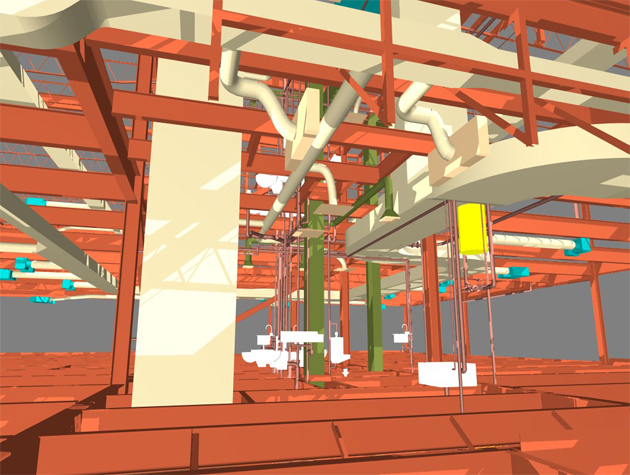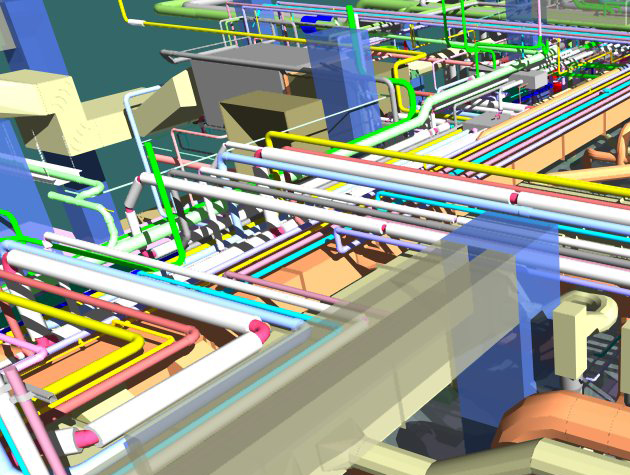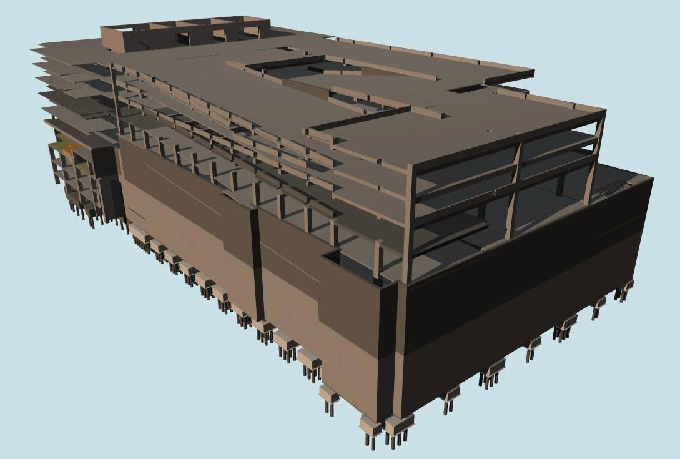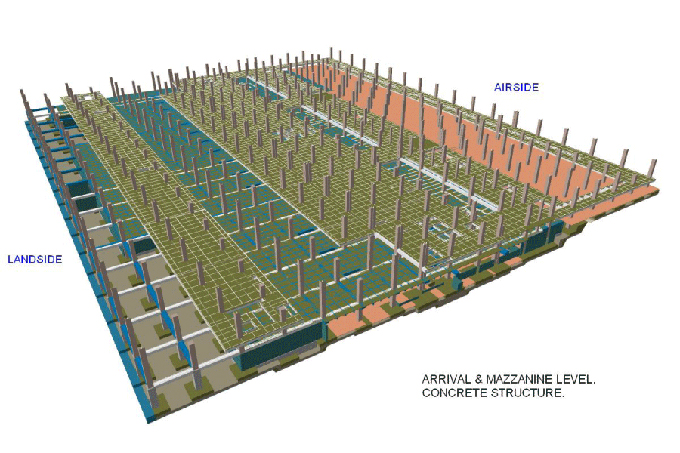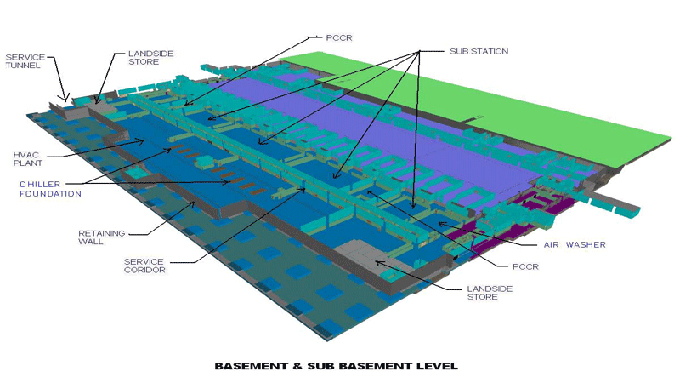BIM in Aviation: Designing and Managing Airports and Aviation Facilities
Tweet
The aviation industry, a crucial backbone of global transportation, is continually evolving to meet the increasing demands of passengers and cargo. As airports and aviation facilities expand and modernize, the adoption of Building Information Modeling (BIM) has become a game-changer.
BIM is revolutionizing the way these facilities are designed, constructed, and managed, providing a comprehensive approach that enhances efficiency, collaboration, and sustainability.
Understanding BIM in Aviation
Building Information Modeling (BIM) is a digital representation of the physical and functional characteristics of a facility. It serves as a shared knowledge resource, providing a reliable basis for decisions throughout the lifecycle of a project, from conception to demolition.
In the context of aviation, BIM encompasses the design, construction, and management of airports and aviation facilities, integrating various disciplines into a cohesive workflow.
Designing Airports with BIM
1. Improved Planning and Visualization
BIM enables architects and engineers to create highly detailed 3D models of airport facilities. These models provide a visual representation of the design, allowing stakeholders to better understand the project before construction begins. Through virtual reality (VR) and augmented reality (AR), stakeholders can experience the proposed design in an immersive environment, facilitating informed decision-making.
2. Enhanced Collaboration
The design of an airport involves multiple disciplines, including architecture, structural engineering, mechanical, electrical, and plumbing (MEP) engineering, and more. BIM fosters collaboration by allowing all stakeholders to work on a single, integrated model. This shared platform reduces the risk of errors and inconsistencies, ensuring that everyone is on the same page.
3. Optimized Space Utilization
Airports are complex facilities with diverse functions, from passenger terminals and baggage handling areas to maintenance hangars and air traffic control towers. BIM helps in optimizing space utilization by providing detailed insights into spatial relationships and usage patterns. This ensures that every square foot is effectively utilized, enhancing the overall efficiency of the facility.
4. Sustainability and Energy Efficiency
BIM plays a crucial role in designing sustainable and energy-efficient airports. By simulating energy consumption and analyzing environmental impact, designers can make informed choices about materials, lighting, HVAC systems, and other elements. This not only reduces the carbon footprint of the airport but also results in significant cost savings over time.
Constructing Airports with BIM
1. Streamlined Construction Processes
During the construction phase, BIM provides a comprehensive overview of the project, enabling efficient coordination and scheduling. Construction teams can visualize the entire process, identify potential clashes, and resolve issues before they arise. This proactive approach minimizes delays and ensures that the project stays on track.
2. Cost Management
BIM allows for precise cost estimation by providing accurate quantities of materials and labor required. This level of detail helps in creating realistic budgets and reduces the risk of cost overruns. Additionally, BIM can simulate different construction scenarios, allowing stakeholders to choose the most cost-effective approach.
3. Quality Control and Assurance
Quality control is critical in airport construction due to the high standards of safety and performance required. BIM enhances quality control by enabling real-time monitoring and inspection. Any deviations from the design can be quickly identified and rectified, ensuring that the final construction meets the required standards.
Managing Airports with BIM
1. Facility Management and Maintenance
BIM extends beyond the construction phase, providing valuable insights for facility management and maintenance. The detailed information contained in the BIM model, such as the location of MEP systems and structural components, helps facility managers efficiently plan and execute maintenance activities. This reduces downtime and extends the lifespan of the facility.
2. Operational Efficiency
Airports are dynamic environments with constantly changing operational needs. BIM supports operational efficiency by providing a comprehensive overview of the facility's infrastructure. This allows for better resource allocation, improved wayfinding for passengers, and more efficient management of services such as cleaning, security, and baggage handling.
3. Emergency Planning and Response
In the event of an emergency, quick and effective response is crucial. BIM aids in emergency planning by providing detailed information about the facility's layout, emergency exits, and safety systems. This information can be used to develop and simulate emergency scenarios, ensuring that airport staff are well-prepared to handle any situation.
4. Lifecycle Management
BIM supports the entire lifecycle of an airport facility, from initial design to eventual decommissioning. By maintaining a digital twin of the facility, stakeholders can make informed decisions about renovations, expansions, and upgrades. This long-term perspective ensures that the airport remains functional and efficient throughout its lifespan.
Case Studies: BIM in Action
1. Istanbul New Airport
The Istanbul New Airport, one of the largest airport projects in the world, utilized BIM extensively throughout its design and construction phases. BIM facilitated collaboration among various stakeholders, allowing for seamless integration of different systems. The result was a state-of-the-art facility that meets the highest standards of efficiency and passenger comfort.
2. Los Angeles International Airport (LAX)
The modernization of LAX employed BIM to manage the complex renovation and expansion of the airport. BIM enabled precise planning and scheduling, reducing construction time and minimizing disruptions to airport operations. The use of BIM also ensured that the project stayed within budget, providing significant cost savings.
3. Singapore Changi Airport Terminal 4
Singapore Changi Airport's Terminal 4 project leveraged BIM for both design and construction. The detailed BIM models allowed for effective coordination among various disciplines, resulting in a high-quality facility. Additionally, the BIM model is being used for ongoing facility management, ensuring that Terminal 4 operates efficiently and sustainably.
Challenges and Future Prospects
While BIM offers numerous benefits, its implementation in the aviation industry is not without challenges. The complexity of airport projects requires significant investment in training and technology. Additionally, the integration of BIM with existing systems can be challenging. However, the long-term benefits of BIM far outweigh these initial hurdles.
Looking ahead, the future of BIM in aviation is promising. The continuous advancement of BIM technology, including the integration of artificial intelligence (AI) and the Internet of Things (IoT), will further enhance its capabilities. These innovations will enable even more precise simulations, predictive maintenance, and real-time monitoring, ensuring that airports and aviation facilities remain at the forefront of efficiency and sustainability.
To get online demonstration, watch the following video tutorial.
Video Source: BIM Coordinators Summit
Conclusion
Building Information Modeling (BIM) is transforming the aviation industry, offering a comprehensive approach to designing and managing airports and aviation facilities. From improved planning and visualization to enhanced collaboration and sustainability, BIM provides numerous benefits throughout the lifecycle of a project.
As airports continue to evolve to meet growing demands, the adoption of BIM will be instrumental in creating efficient, sustainable, and passenger-friendly facilities. By embracing BIM, the aviation industry can soar to new heights, delivering exceptional experiences for travelers and stakeholders alike.

Gallery
Feel free to contact us for BIM requirements. One of our representative will respond you within 24 Hours. Send us your projects requirement today and grow your project.
Explore More !
